Oxytocin attenuates phencyclidine hyperactivity and increases social interaction and nucleus accumben dopamine release in rats
- PMID: 30120410
- PMCID: PMC6300530
- DOI: 10.1038/s41386-018-0171-0
Oxytocin attenuates phencyclidine hyperactivity and increases social interaction and nucleus accumben dopamine release in rats
Abstract
The pituitary neuropeptide oxytocin promotes social behavior, and is a potential adjunct therapy for social deficits in schizophrenia and autism. Oxytocin may mediate pro-social effects by modulating monoamine release in limbic and cortical areas, which was investigated herein using in vivo microdialysis, after establishing a dose that did not produce accompanying sedative or thermoregulatory effects that could concomitantly influence behavior. The effects of oxytocin (0.03-0.3 mg/kg subcutaneous) on locomotor activity, core body temperature, and social behavior (social interaction and ultrasonic vocalizations) were examined in adult male Lister-hooded rats, using selective antagonists to determine the role of oxytocin and vasopressin V1a receptors. Dopamine and serotonin efflux in the prefrontal cortex and nucleus accumbens of conscious rats were assessed using microdialysis. 0.3 mg/kg oxytocin modestly reduced activity and caused hypothermia but only the latter was attenuated by the V1a receptor antagonist, SR49059 (1 mg/kg intraperitoneal). Oxytocin at 0.1 mg/kg, which did not alter activity and had little effect on temperature, significantly attenuated phencyclidine-induced hyperactivity and increased social interaction between unfamiliar rats without altering the number or pattern of ultrasonic vocalizations. In the same rats, oxytocin (0.1 mg/kg) selectively elevated dopamine overflow in the nucleus accumbens, but not prefrontal cortex, without influencing serotonin efflux. Systemic oxytocin administration attenuated phencyclidine-induced hyperactivity and increased pro-social behavior without decreasing core body temperature and selectively enhanced nucleus accumbens dopamine release, consistent with activation of mesocorticolimbic circuits regulating associative/reward behavior being involved. This highlights the therapeutic potential of oxytocin to treat social behavioral deficits seen in psychiatric disorders such as schizophrenia.
Conflict of interest statement
We declare that, except for income received from their primary employer, no financial support or compensation has been received from any individual or corporate entity over the past three years for research or professional service and there are no personal financial holdings that could be perceived as constituting a potential conflict of interest. The contribution to this work made by SK, MVK, and KCFF was financially supported by Roche. The University of Nottingham BBSRC DTP provided funding for Adele Edwards and Stuart Williams to perform dose–response studies with oxytocin while on laboratory rotations. LJS, TMB, and DA are employed by Hoffmann-la Roche.
Figures
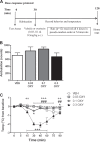
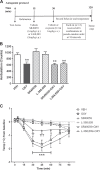
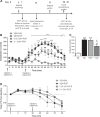
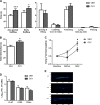
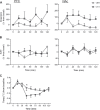
Similar articles
-
Subchronic continuous phencyclidine administration potentiates amphetamine-induced frontal cortex dopamine release.Neuropsychopharmacology. 2003 Jan;28(1):34-44. doi: 10.1038/sj.npp.1300019. Neuropsychopharmacology. 2003. PMID: 12496938
-
Prefrontal cortical involvement in phencyclidine-induced activation of the mesolimbic dopamine system: behavioral and neurochemical evidence.Psychopharmacology (Berl). 1998 Jul;138(1):89-95. doi: 10.1007/s002130050649. Psychopharmacology (Berl). 1998. PMID: 9694531
-
Adaptation of monoaminergic responses to phencyclidine in nucleus accumbens and prefrontal cortex following repeated treatment with fluoxetine or imipramine.Brain Res. 2002 Dec 20;958(1):20-7. doi: 10.1016/s0006-8993(02)03772-1. Brain Res. 2002. PMID: 12468026
-
A review of the effects of different types of social behaviors on the recruitment of neuropeptides and neurotransmitters in the nucleus accumbens.Front Neuroendocrinol. 2025 Apr;77:101175. doi: 10.1016/j.yfrne.2025.101175. Epub 2025 Jan 31. Front Neuroendocrinol. 2025. PMID: 39892577 Review.
-
Dopamine and oxytocin interactions underlying behaviors: potential contributions to behavioral disorders.CNS Neurosci Ther. 2010 Jun;16(3):e92-123. doi: 10.1111/j.1755-5949.2010.00154.x. CNS Neurosci Ther. 2010. PMID: 20557568 Free PMC article. Review.
Cited by
-
Effects of systemic oxytocin receptor activation and blockade on risky decision making in female and male rats.Behav Neurosci. 2025 Jun;139(3):137-152. doi: 10.1037/bne0000621. Epub 2025 Apr 7. Behav Neurosci. 2025. PMID: 40193422
-
Heteromerization of Dopamine D2 and Oxytocin Receptor in Adult Striatal Astrocytes.Int J Mol Sci. 2023 Feb 28;24(5):4677. doi: 10.3390/ijms24054677. Int J Mol Sci. 2023. PMID: 36902106 Free PMC article.
-
Modulation of the thermosensory system by oxytocin.Front Mol Neurosci. 2023 Jan 9;15:1075305. doi: 10.3389/fnmol.2022.1075305. eCollection 2022. Front Mol Neurosci. 2023. PMID: 36698777 Free PMC article. Review.
-
The effect of intranasal oxytocin on social reward processing in humans: a systematic review.Front Psychiatry. 2023 Sep 14;14:1244027. doi: 10.3389/fpsyt.2023.1244027. eCollection 2023. Front Psychiatry. 2023. PMID: 37779612 Free PMC article.
-
Effects of systemic oxytocin receptor activation and blockade on risky decision making in female and male rats.bioRxiv [Preprint]. 2024 May 14:2024.05.13.593981. doi: 10.1101/2024.05.13.593981. bioRxiv. 2024. Update in: Behav Neurosci. 2025 Jun;139(3):137-152. doi: 10.1037/bne0000621. PMID: 38798601 Free PMC article. Updated. Preprint.
References
-
- Neumann I, Russell JA, Landgraf R. Oxytocin and vasopressin release within the supraoptic and paraventricular nuclei of pregnant, parturient and lactating rats: a microdialysis study. Neuroscience. 1993;53:65–75. - PubMed
-
- Borthwick AD. Oral oxytocin antagonists. J Med Chem. 2010;53:6525–38. - PubMed
-
- Grinevich V, Knobloch-Bollmann HS, Eliava M, Busnelli M, Chini B. Assembling the Puzzle: pathways of oxytocin signaling in the brain. Biol Psychiatry. 2016;79:155–64. - PubMed
-
- Meyer-Lindenberg A, Domes G, Kirsch P, Heinrichs M. Oxytocin and vasopressin in the human brain: social neuropeptides for translational medicine. Nat Rev Neurosci. 2011;12:524–38. - PubMed
MeSH terms
Substances
LinkOut - more resources
Full Text Sources
Other Literature Sources

